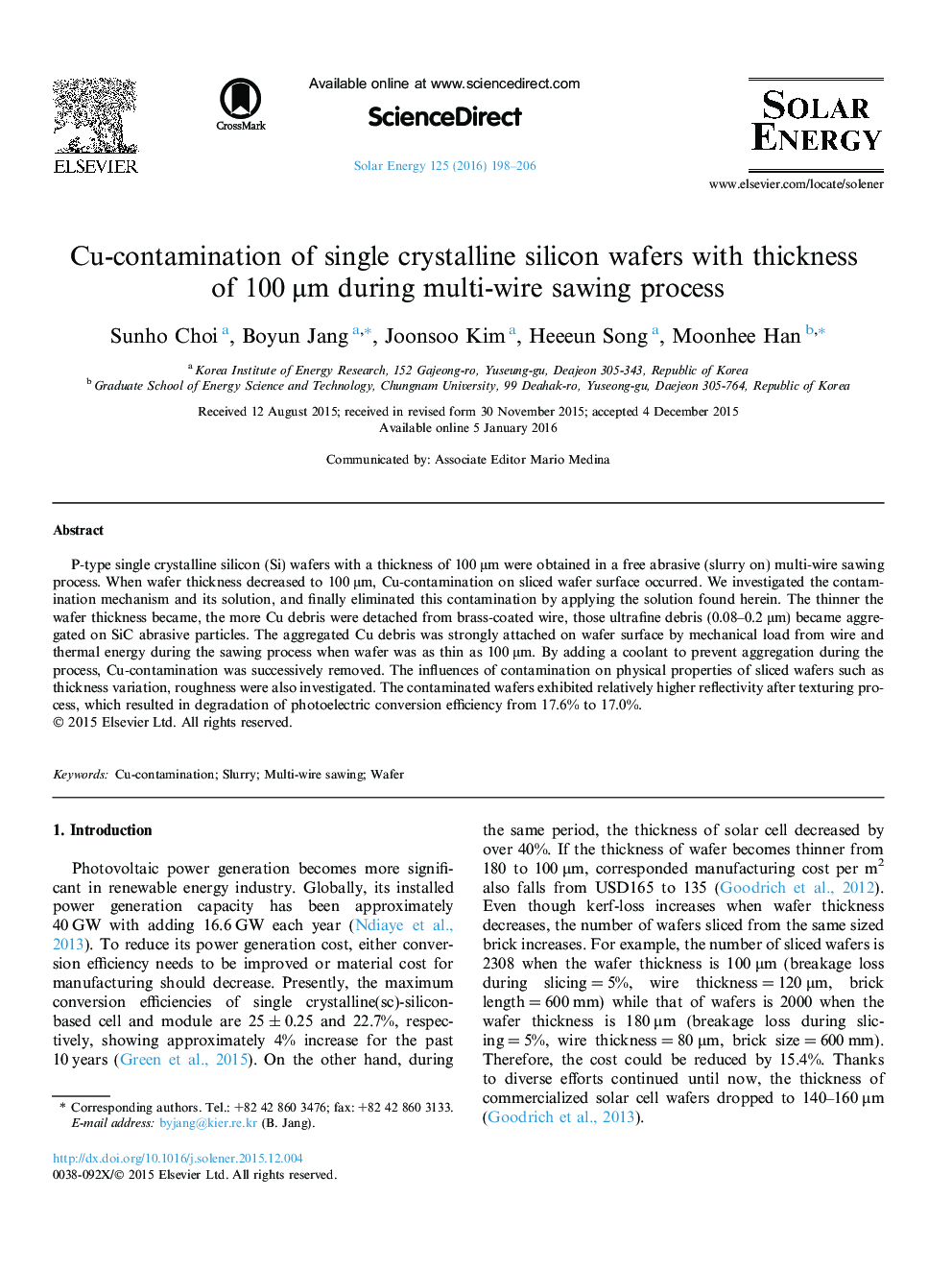| Article ID | Journal | Published Year | Pages | File Type |
|---|---|---|---|---|
| 1549487 | Solar Energy | 2016 | 9 Pages |
•Thin silicon wafers with thickness of 100 μm were sliced by slurry-based multi-wire slicing.•Cu-contamination on the wafer surface occurred due to an increase of slurry’s viscosity.•Contamination mechanism and its solution were investigated.•Effects of Cu-contamination on physical and optoelectronic properties were studied.
P-type single crystalline silicon (Si) wafers with a thickness of 100 μm were obtained in a free abrasive (slurry on) multi-wire sawing process. When wafer thickness decreased to 100 μm, Cu-contamination on sliced wafer surface occurred. We investigated the contamination mechanism and its solution, and finally eliminated this contamination by applying the solution found herein. The thinner the wafer thickness became, the more Cu debris were detached from brass-coated wire, those ultrafine debris (0.08–0.2 μm) became aggregated on SiC abrasive particles. The aggregated Cu debris was strongly attached on wafer surface by mechanical load from wire and thermal energy during the sawing process when wafer was as thin as 100 μm. By adding a coolant to prevent aggregation during the process, Cu-contamination was successively removed. The influences of contamination on physical properties of sliced wafers such as thickness variation, roughness were also investigated. The contaminated wafers exhibited relatively higher reflectivity after texturing process, which resulted in degradation of photoelectric conversion efficiency from 17.6% to 17.0%.
